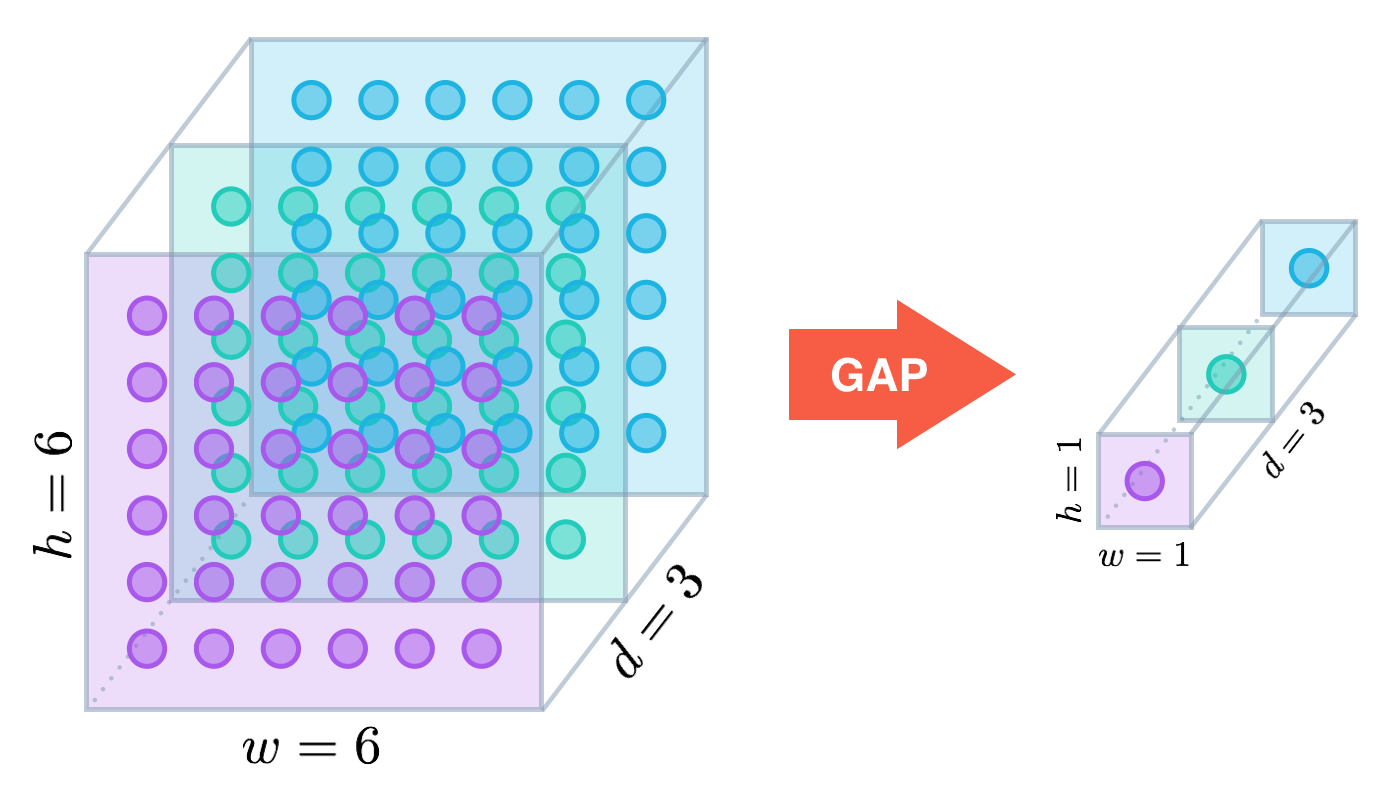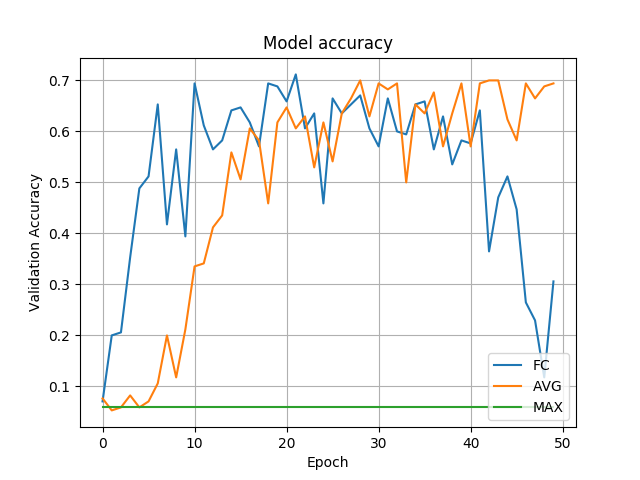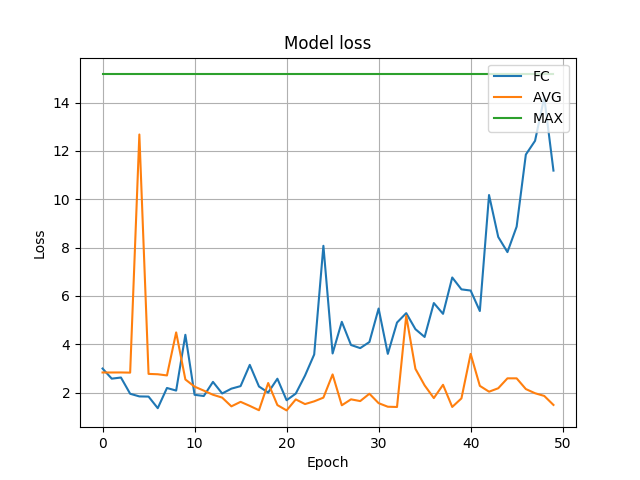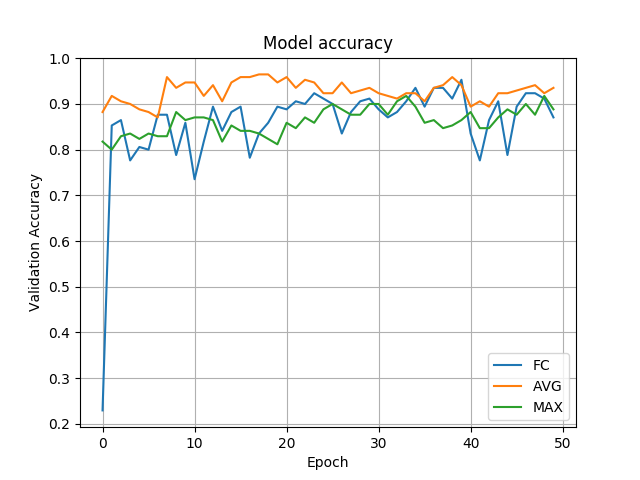深度学习基础系列(十)| Global Average Pooling是否可以替代全连接层?
Global Average Pooling(简称GAP,全局池化层)技术最早提出是在这篇论文(第3.2节)中,被认为是可以替代全连接层的一种新技术。在keras发布的经典模型中,可以看到不少模型甚至抛弃了全连接层,转而使用GAP,而在支持迁移学习方面,各个模型几乎都支持使用Global Average Pooling和Global Max Pooling(GMP)。 然而,GAP是否真的可以取代全连接层?其背后的原理何在呢?本文来一探究竟。
一、什么是GAP?
先看看原论文的定义:
In this paper, we propose another strategy called global average pooling to replace the traditional fully connected layers in CNN. The idea is to generate one feature map for each corresponding category of the classification task in the last mlpconv layer. Instead of adding fully connected layers on top of the feature maps, we take the average of each feature map, and the resulting vector is fed directly into the softmax layer. One advantage of global average pooling over the fully connected layers is that it is more native to the convolution structure by enforcing correspondences between feature maps and categories. Thus the feature maps can be easily interpreted as categories confidence maps. Another advantage is that there is no parameter to optimize in the global average pooling thus overfitting is avoided at this layer. Futhermore, global average pooling sums out the spatial information, thus it is more robust to spatial translations of the input.
简单来说,就是在卷积层之后,用GAP替代FC全连接层。有两个有点:一是GAP在特征图与最终的分类间转换更加简单自然;二是不像FC层需要大量训练调优的参数,降低了空间参数会使模型更加健壮,抗过拟合效果更佳。
我们再用更直观的图像来看GAP的工作原理:

假设卷积层的最后输出是h × w × d 的三维特征图,具体大小为6 × 6 × 3,经过GAP转换后,变成了大小为 1 × 1 × 3 的输出值,也就是每一层 h × w 会被平均化成一个值。
二、 GAP在Keras中的定义
GAP的使用一般在卷积层之后,输出层之前:
x = layers.MaxPooling2D((2, 2), strides=(2, 2), name='block5_pool')(x) #卷积层最后一层 x = layers.GlobalAveragePooling2D()(x) #GAP层 prediction = Dense(10, activation='softmax')(x) #输出层
再看看GAP的代码具体实现:
@tf_export('keras.layers.GlobalAveragePooling2D', 'keras.layers.GlobalAvgPool2D') class GlobalAveragePooling2D(GlobalPooling2D): """Global average pooling operation for spatial data. Arguments: data_format: A string, one of `channels_last` (default) or `channels_first`. The ordering of the dimensions in the inputs. `channels_last` corresponds to inputs with shape `(batch, height, width, channels)` while `channels_first` corresponds to inputs with shape `(batch, channels, height, width)`. It defaults to the `image_data_format` value found in your Keras config file at `~/.keras/keras.json`. If you never set it, then it will be "channels_last". Input shape: - If `data_format='channels_last'`: 4D tensor with shape: `(batch_size, rows, cols, channels)` - If `data_format='channels_first'`: 4D tensor with shape: `(batch_size, channels, rows, cols)` Output shape: 2D tensor with shape: `(batch_size, channels)` """ def call(self, inputs): if self.data_format == 'channels_last': return backend.mean(inputs, axis=[1, 2]) else: return backend.mean(inputs, axis=[2, 3])
实现很简单,对宽度和高度两个维度的特征数据进行平均化求值。如果是NHWC结构(数量、宽度、高度、通道数),则axis=[1, 2];反之如果是CNHW,则axis=[2, 3]。
三、GAP VS GMP VS FC
在验证GAP技术可行性前,我们需要准备训练和测试数据集。我在牛津大学网站上找到了17种不同花类的数据集,地址为:http://www.robots.ox.ac.uk/~vgg/data/flowers/17/index.html 。该数据集每种花有80张图片,共计1360张图片,我对花进行了分类处理,抽取了部分数据作为测试数据,这样最终训练和测试数据的数量比为7:1。
我将数据集上传到我的百度网盘: https://pan.baidu.com/s/1YDA_VOBlJSQEijcCoGC60w ,大家可以下载使用。
在Keras经典模型中,若支持迁移学习,不但有GAP,还有GMP,而默认是自己组建FC层,一个典型的实现为:
if include_top: # Classification block x = layers.Flatten(name='flatten')(x) x = layers.Dense(4096, activation='relu', name='fc1')(x) x = layers.Dense(4096, activation='relu', name='fc2')(x) x = layers.Dense(classes, activation='softmax', name='predictions')(x) else: if pooling == 'avg': x = layers.GlobalAveragePooling2D()(x) elif pooling == 'max': x = layers.GlobalMaxPooling2D()(x)
本文将在同一数据集条件下,比较GAP、GMP和FC层的优劣,选取测试模型为VGG19和InceptionV3两种模型的迁移学习版本。
先看看在VGG19模型下,GAP、GMP和FC层在各自迭代50次后,验证准确度和损失度的比对。代码如下:
import keras from keras.preprocessing.image import ImageDataGenerator from keras.models import Model from keras.applications.vgg19 import VGG19from keras.layers import Dense, Flatten from matplotlib import pyplot as plt import numpy as np # 为保证公平起见,使用相同的随机种子 np.random.seed(7) batch_size = 32 # 迭代50次 epochs = 50 # 依照模型规定,图片大小被设定为224 IMAGE_SIZE = 224 # 17种花的分类 NUM_CLASSES = 17 TRAIN_PATH = '/home/yourname/Documents/tensorflow/images/17flowerclasses/train' TEST_PATH = '/home/yourname/Documents/tensorflow/images/17flowerclasses/test' FLOWER_CLASSES = ['Bluebell', 'ButterCup', 'ColtsFoot', 'Cowslip', 'Crocus', 'Daffodil', 'Daisy', 'Dandelion', 'Fritillary', 'Iris', 'LilyValley', 'Pansy', 'Snowdrop', 'Sunflower', 'Tigerlily', 'tulip', 'WindFlower'] def model(mode='fc'): if mode == 'fc': # FC层设定为含有512个参数的隐藏层 base_model = VGG19(input_shape=(IMAGE_SIZE, IMAGE_SIZE, 3), include_top=False, pooling='none') x = base_model.output x = Flatten()(x) x = Dense(512, activation='relu')(x) prediction = Dense(NUM_CLASSES, activation='softmax')(x) elif mode == 'avg': # GAP层通过指定pooling='avg'来设定 base_model = VGG19(input_shape=(IMAGE_SIZE, IMAGE_SIZE, 3), include_top=False, pooling='avg') x = base_model.output prediction = Dense(NUM_CLASSES, activation='softmax')(x) else: # GMP层通过指定pooling='max'来设定 base_model = VGG19(input_shape=(IMAGE_SIZE, IMAGE_SIZE, 3), include_top=False, pooling='max') x = base_model.output prediction = Dense(NUM_CLASSES, activation='softmax')(x) model = Model(input=base_model.input, output=prediction) model.summary() opt = keras.optimizers.rmsprop(lr=0.0001, decay=1e-6) model.compile(loss='categorical_crossentropy', optimizer=opt, metrics=['accuracy']) # 使用数据增强 train_datagen = ImageDataGenerator() train_generator = train_datagen.flow_from_directory(directory=TRAIN_PATH, target_size=(IMAGE_SIZE, IMAGE_SIZE), classes=FLOWER_CLASSES) test_datagen = ImageDataGenerator() test_generator = test_datagen.flow_from_directory(directory=TEST_PATH, target_size=(IMAGE_SIZE, IMAGE_SIZE), classes=FLOWER_CLASSES) # 运行模型 history = model.fit_generator(train_generator, epochs=epochs, validation_data=test_generator) return history fc_history = model('fc') avg_history = model('avg') max_history = model('max') # 比较多种模型的精确度 plt.plot(fc_history.history['val_acc']) plt.plot(avg_history.history['val_acc']) plt.plot(max_history.history['val_acc']) plt.title('Model accuracy') plt.ylabel('Validation Accuracy') plt.xlabel('Epoch') plt.legend(['FC', 'AVG', 'MAX'], loc='lower right') plt.grid(True) plt.show() # 比较多种模型的损失率 plt.plot(fc_history.history['val_loss']) plt.plot(avg_history.history['val_loss']) plt.plot(max_history.history['val_loss']) plt.title('Model loss') plt.ylabel('Loss') plt.xlabel('Epoch') plt.legend(['FC', 'AVG', 'MAX'], loc='upper right') plt.grid(True) plt.show()
各自运行50次迭代后,我们看看准确度比较:

再看看损失度比较:

可以看出,首先GMP在本模型中表现太差,不值一提;而FC在前40次迭代时表现尚可,但到了40次后发生了剧烈变化,出现了过拟合现象(运行20次左右时的模型相对较好,但准确率不足70%,模型还是很差);三者中表现最好的是GAP,无论从准确度还是损失率,表现都较为平稳,抗过拟合化效果明显(但最终的准确度70%,模型还是不行)。
我们再转向另一个模型InceptionV3,代码稍加改动如下:
import keras from keras.preprocessing.image import ImageDataGenerator from keras.models import Model from keras.applications.inception_v3 import InceptionV3, preprocess_input from keras.layers import Dense, Flatten from matplotlib import pyplot as plt import numpy as np # 为保证公平起见,使用相同的随机种子 np.random.seed(7) batch_size = 32 # 迭代50次 epochs = 50 # 依照模型规定,图片大小被设定为224 IMAGE_SIZE = 224 # 17种花的分类 NUM_CLASSES = 17 TRAIN_PATH = '/home/hutao/Documents/tensorflow/images/17flowerclasses/train' TEST_PATH = '/home/hutao/Documents/tensorflow/images/17flowerclasses/test' FLOWER_CLASSES = ['Bluebell', 'ButterCup', 'ColtsFoot', 'Cowslip', 'Crocus', 'Daffodil', 'Daisy', 'Dandelion', 'Fritillary', 'Iris', 'LilyValley', 'Pansy', 'Snowdrop', 'Sunflower', 'Tigerlily', 'tulip', 'WindFlower'] def model(mode='fc'): if mode == 'fc': # FC层设定为含有512个参数的隐藏层 base_model = InceptionV3(input_shape=(IMAGE_SIZE, IMAGE_SIZE, 3), include_top=False, pooling='none') x = base_model.output x = Flatten()(x) x = Dense(512, activation='relu')(x) prediction = Dense(NUM_CLASSES, activation='softmax')(x) elif mode == 'avg': # GAP层通过指定pooling='avg'来设定 base_model = InceptionV3(input_shape=(IMAGE_SIZE, IMAGE_SIZE, 3), include_top=False, pooling='avg') x = base_model.output prediction = Dense(NUM_CLASSES, activation='softmax')(x) else: # GMP层通过指定pooling='max'来设定 base_model = InceptionV3(input_shape=(IMAGE_SIZE, IMAGE_SIZE, 3), include_top=False, pooling='max') x = base_model.output prediction = Dense(NUM_CLASSES, activation='softmax')(x) model = Model(input=base_model.input, output=prediction) model.summary() opt = keras.optimizers.rmsprop(lr=0.0001, decay=1e-6) model.compile(loss='categorical_crossentropy', optimizer=opt, metrics=['accuracy']) # 使用数据增强 train_datagen = ImageDataGenerator() train_generator = train_datagen.flow_from_directory(directory=TRAIN_PATH, target_size=(IMAGE_SIZE, IMAGE_SIZE), classes=FLOWER_CLASSES) test_datagen = ImageDataGenerator() test_generator = test_datagen.flow_from_directory(directory=TEST_PATH, target_size=(IMAGE_SIZE, IMAGE_SIZE), classes=FLOWER_CLASSES) # 运行模型 history = model.fit_generator(train_generator, epochs=epochs, validation_data=test_generator) return history fc_history = model('fc') avg_history = model('avg') max_history = model('max') # 比较多种模型的精确度 plt.plot(fc_history.history['val_acc']) plt.plot(avg_history.history['val_acc']) plt.plot(max_history.history['val_acc']) plt.title('Model accuracy') plt.ylabel('Validation Accuracy') plt.xlabel('Epoch') plt.legend(['FC', 'AVG', 'MAX'], loc='lower right') plt.grid(True) plt.show() # 比较多种模型的损失率 plt.plot(fc_history.history['val_loss']) plt.plot(avg_history.history['val_loss']) plt.plot(max_history.history['val_loss']) plt.title('Model loss') plt.ylabel('Loss') plt.xlabel('Epoch') plt.legend(['FC', 'AVG', 'MAX'], loc='upper right') plt.grid(True) plt.show()
先看看准确度的比较:

再看看损失度的比较:

很明显,在InceptionV3模型下,FC、GAP和GMP都表现很好,但可以看出GAP的表现依旧最好,其准确度普遍在90%以上,而另两种的准确度在80~90%之间。
四、结论
从本实验看出,在数据集有限的情况下,采用经典模型进行迁移学习时,GMP表现不太稳定,FC层由于训练参数过多,更易导致过拟合现象的发生,而GAP则表现稳定,优于FC层。当然具体情况具体分析,我们拿到数据集后,可以在几种方式中多训练测试,以寻求最优解决方案。



